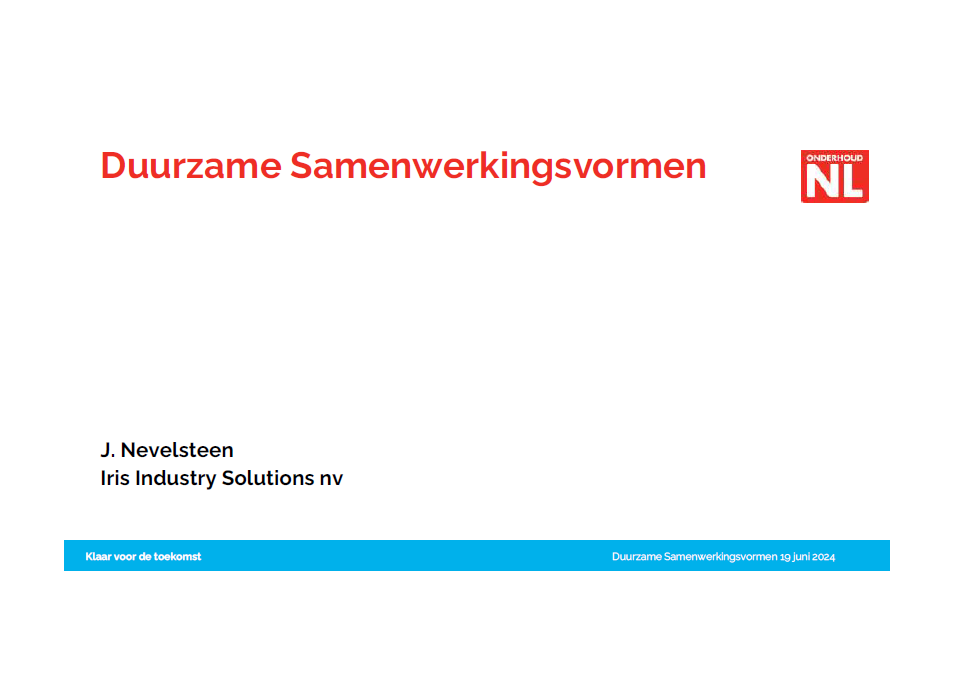Sustainable Partnerships - Ready for the Future
On June 19, 2024, an inspiring lecture was given by J. Nevelsteen of Iris Industry Solutions nv on sustainable collaboration models, which explored how alternative collaboration models can contribute to the sustainability of projects. This lecture offered valuable insights into current bottlenecks and introduced innovative collaboration methods that are ready for the future.
Current Bottlenecks in Collaboration
One of the main challenges with traditional forms of collaboration is the suboptimal use of the expertise of involved parties. Often, not all relevant parties are involved early enough in the process, which can lead to less sustainable results. In addition, not all parties have the same interests when it comes to sustainability, which can lead to tensions and reluctance to adopt new forms of collaboration. Legal regulations can also act as constraints. There is a clear difference between short-term costs (OPEX) and long-term investments (CAPEX), which can complicate decision-making.
Alternative Forms of Cooperation
Several alternative forms of collaboration were presented during the talk, including chain collaboration, a 2-phase approach, and results-based collaboration (RGS). These methods emphasize the importance of collaboration throughout the chain and focus on creating common interests and goals, ultimately leading to more sustainable and efficient project outcomes.
One notable concept discussed was "Conservation As A Service." This model fits within a circular economy and aims to reduce the Total Cost of Ownership (TCO). The idea is that customers and preservationists have a shared interest in extending the life of products, which makes for a more sustainable revenue model. "Light As A Service," in which customers pay monthly for lighting instead of investing in the purchase of lighting equipment, was cited as an example.
Challenges in Implementation
Implementing such sustainable forms of cooperation also brings new challenges. New contract forms and tendering methods are needed, as well as revenue models that continue to guarantee competition. A collaboration between customer, preserver and manufacturer requires clear agreements on maintenance levels and warranty conditions. Consideration must be given to how these new models of cooperation can be integrated without disrupting existing market principles.
Conclusion
The talk made it clear that sustainable forms of collaboration are essential to the future of industries striving for longer life cycles and a lower carbon footprint. By embracing alternative forms of collaboration, companies can not only improve their sustainability but also optimize their cost structure. It is now up to companies to step up and integrate these new models into their practices to truly be ready for the future.
With these insights and strategies, organizations can operate more sustainably while creating value for all stakeholders. "Conservation As A Service offers a promising route for the future, with long-term thinking and collaboration at its core."
